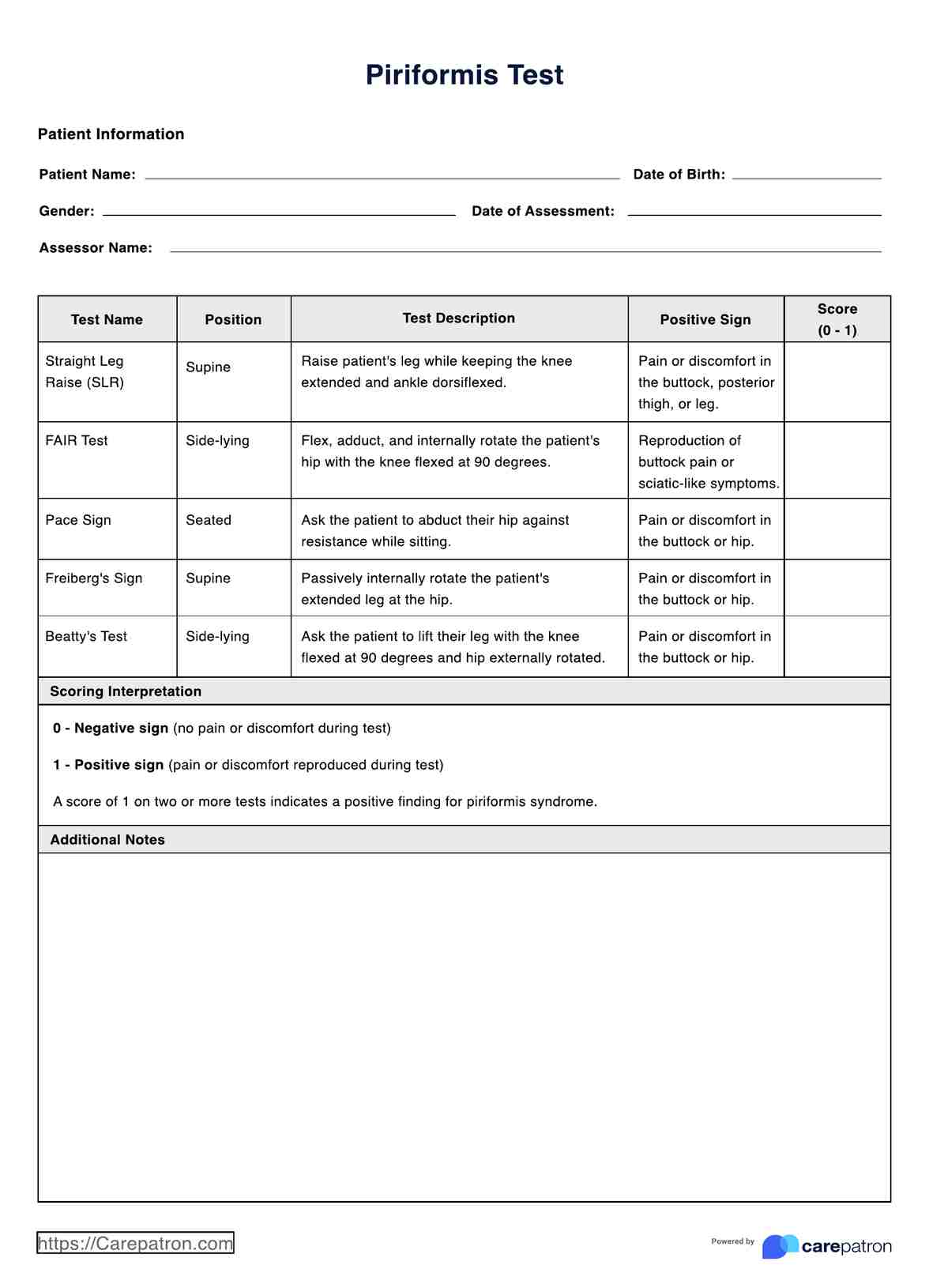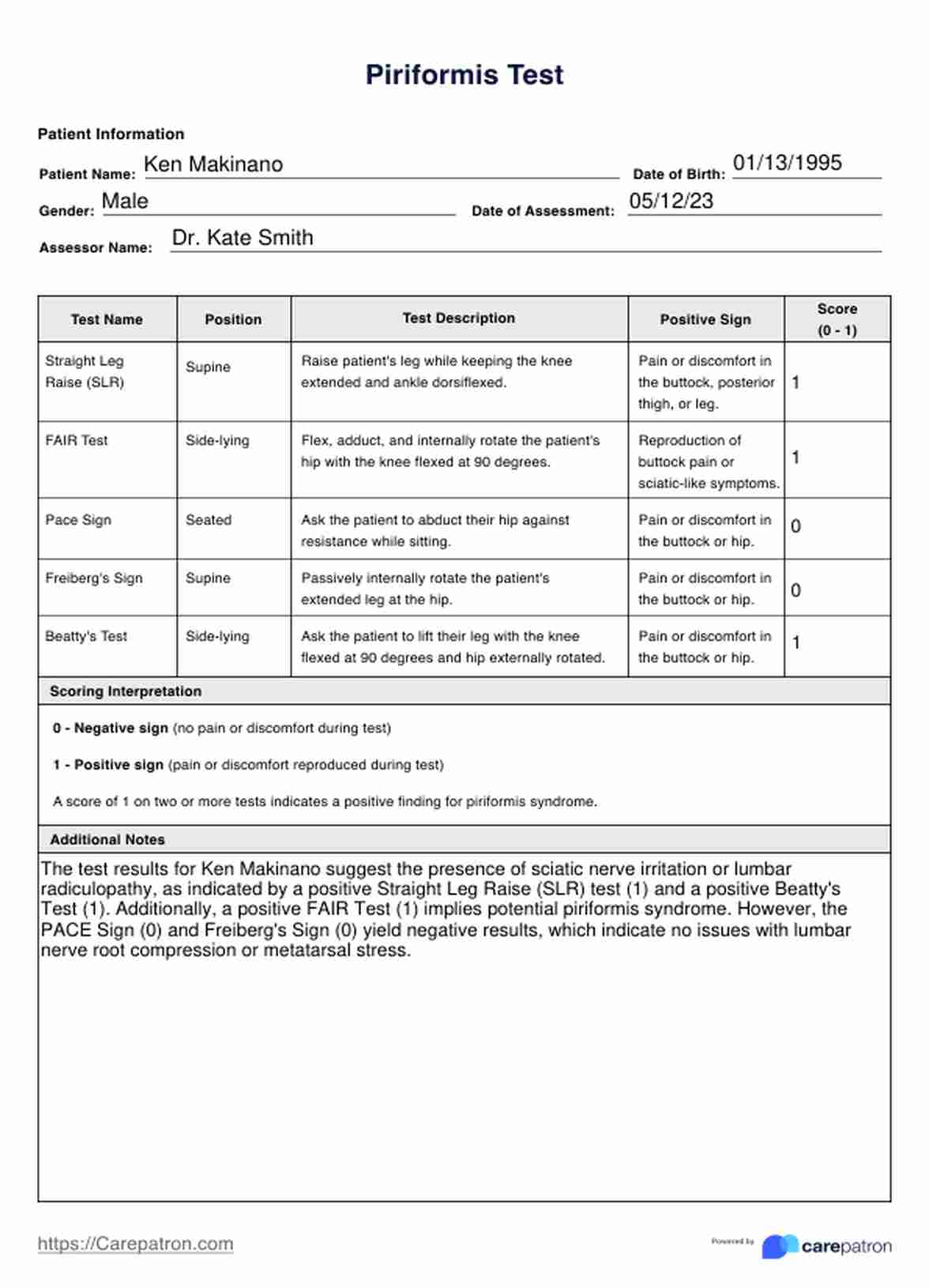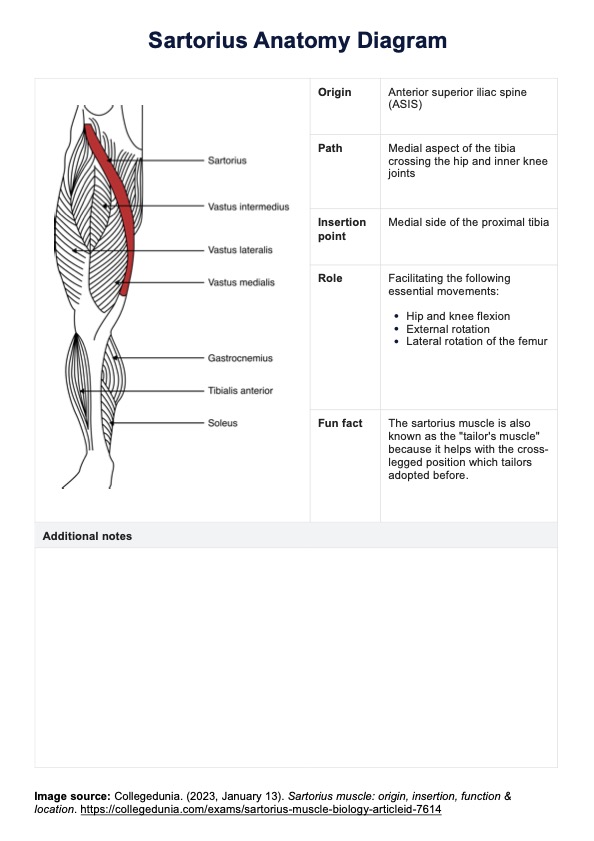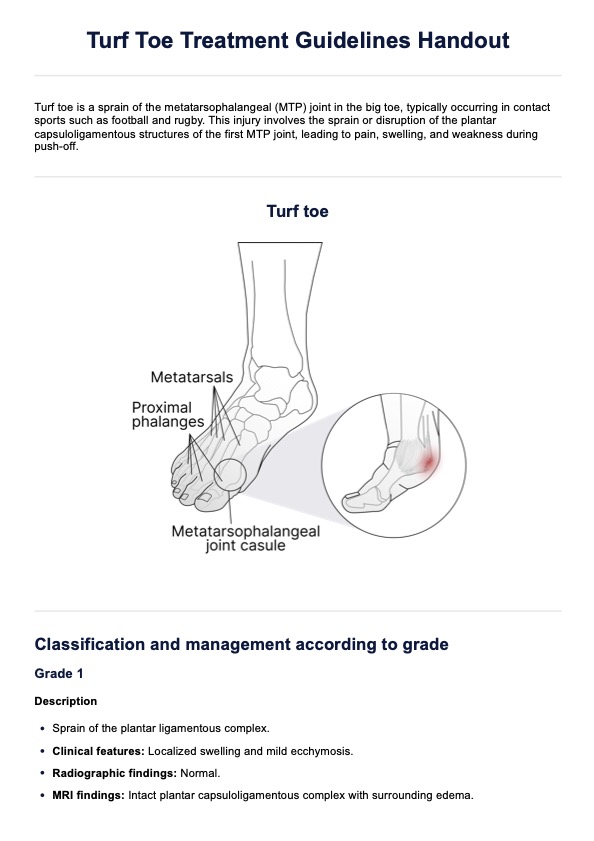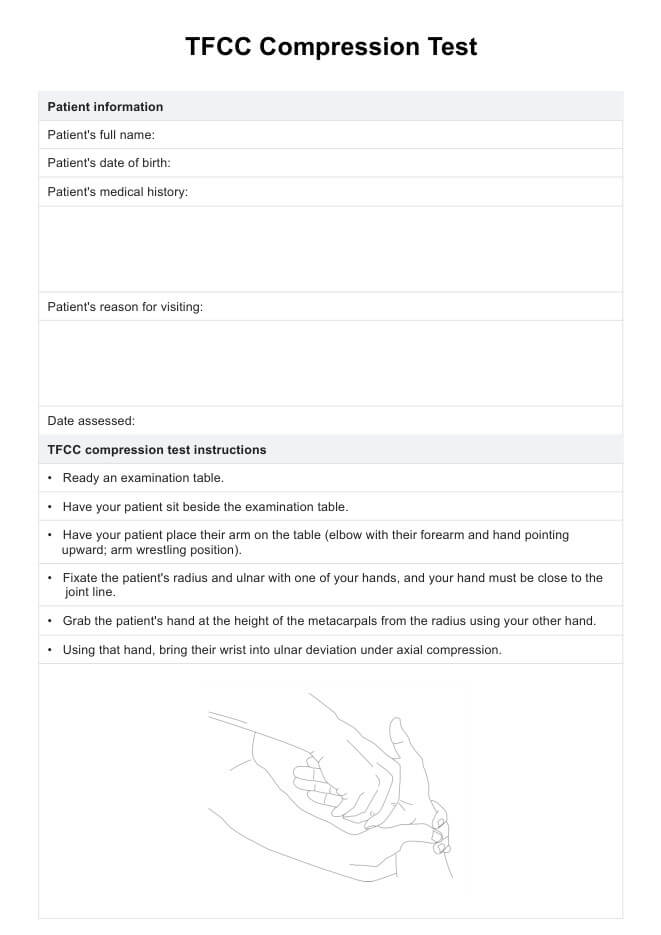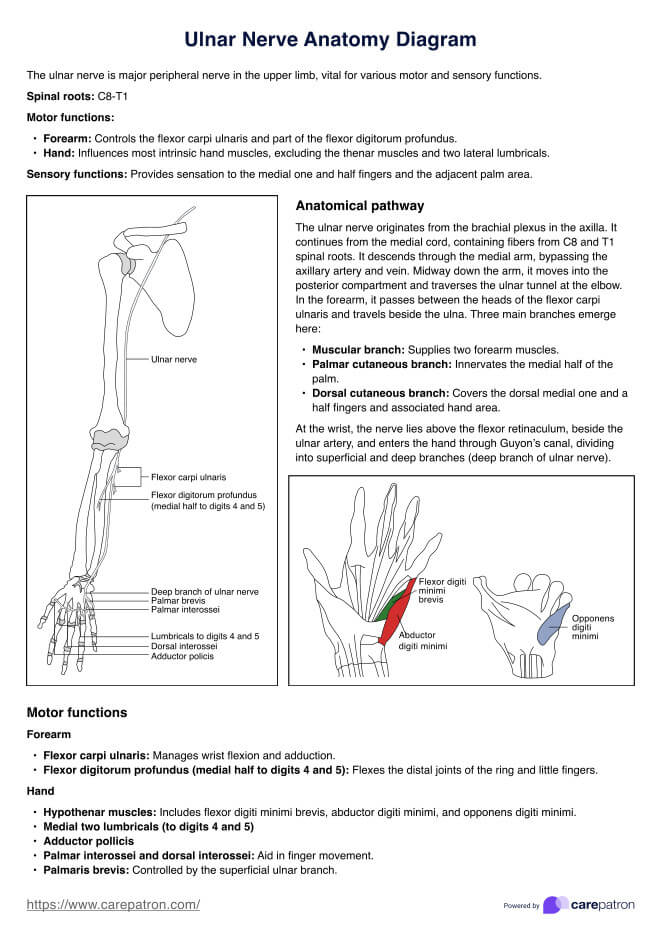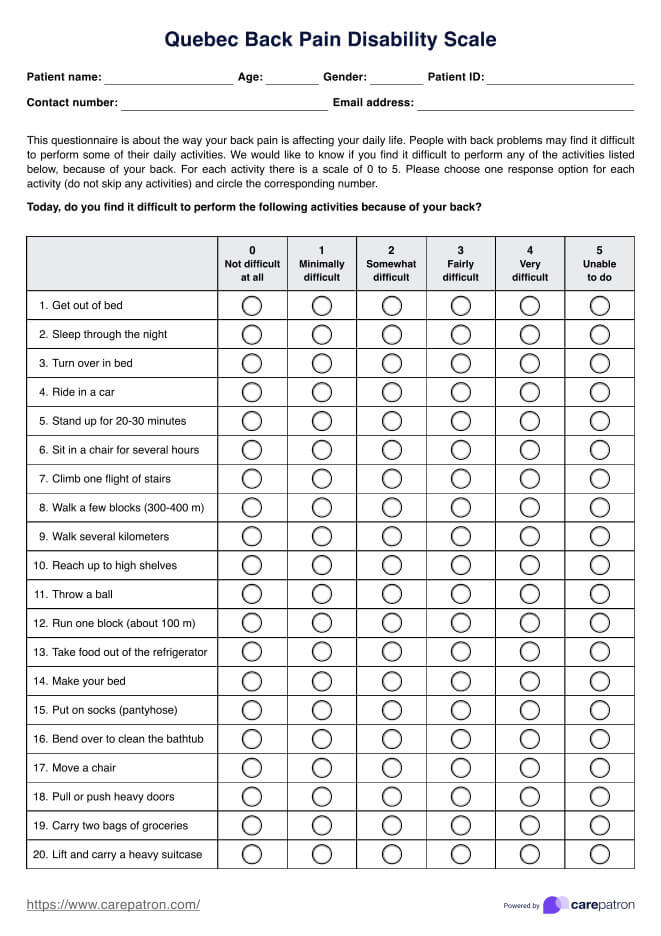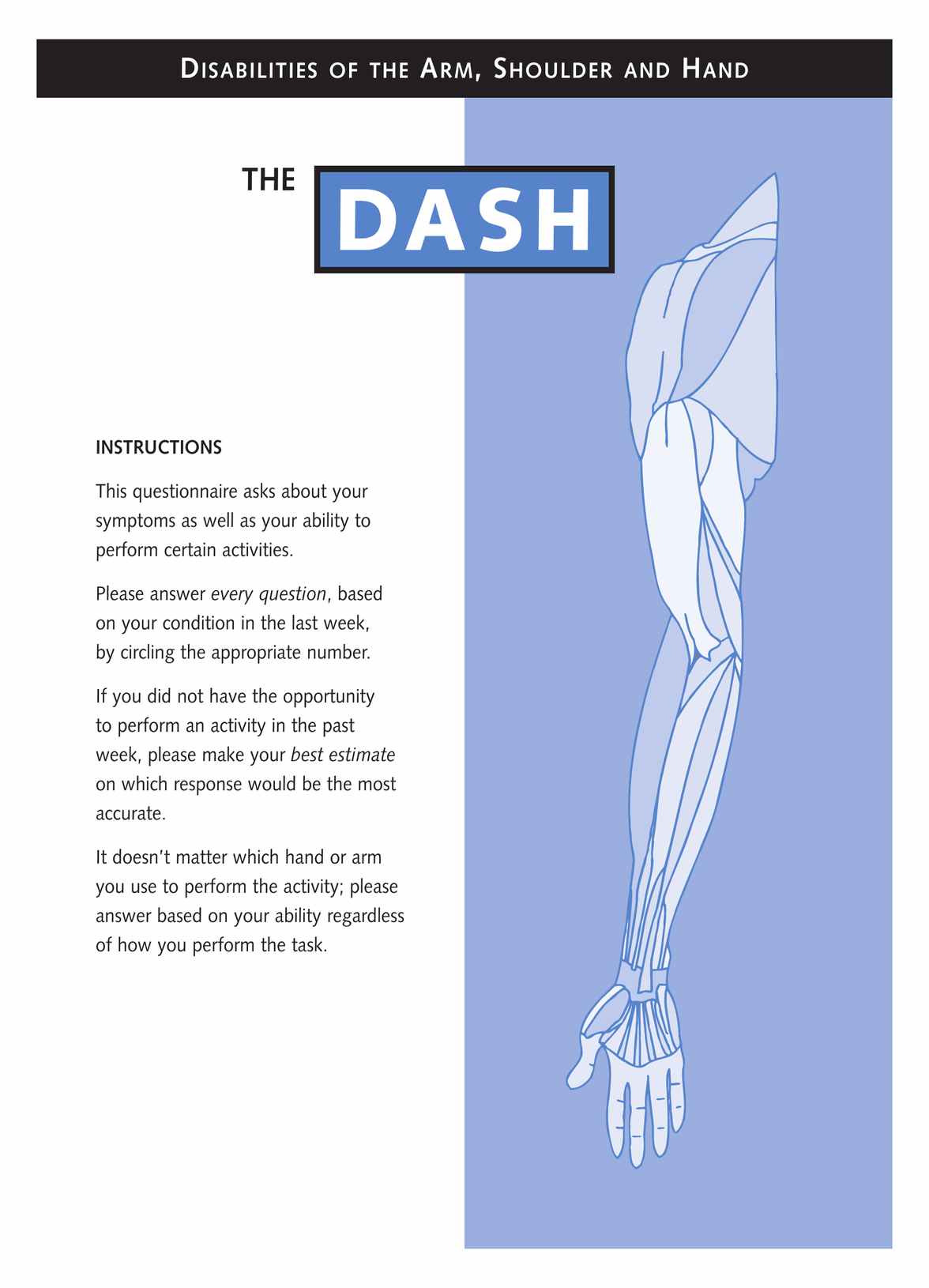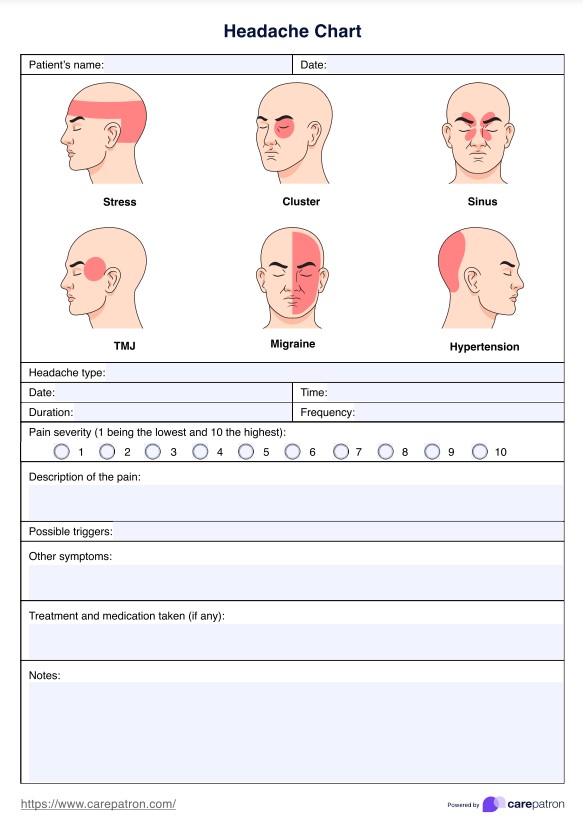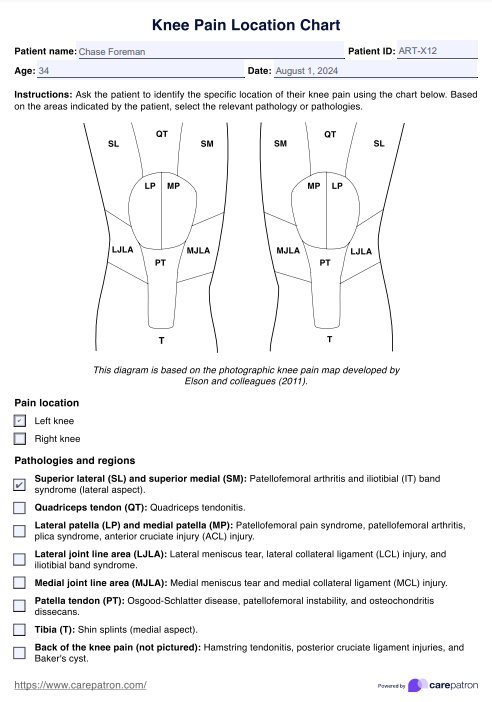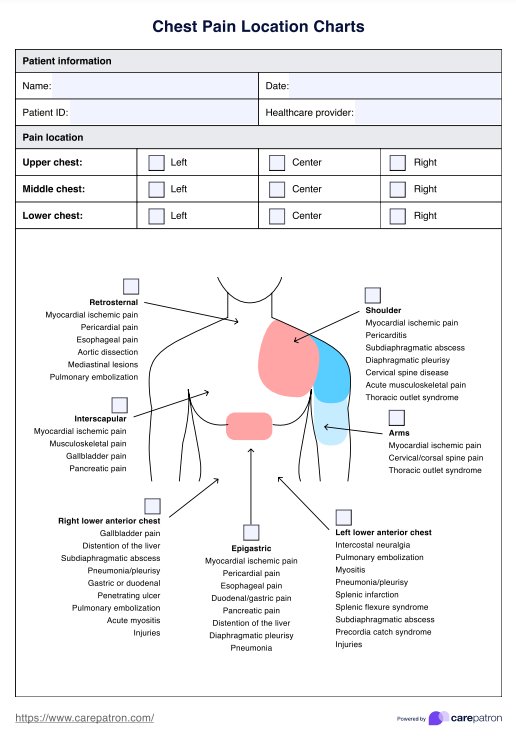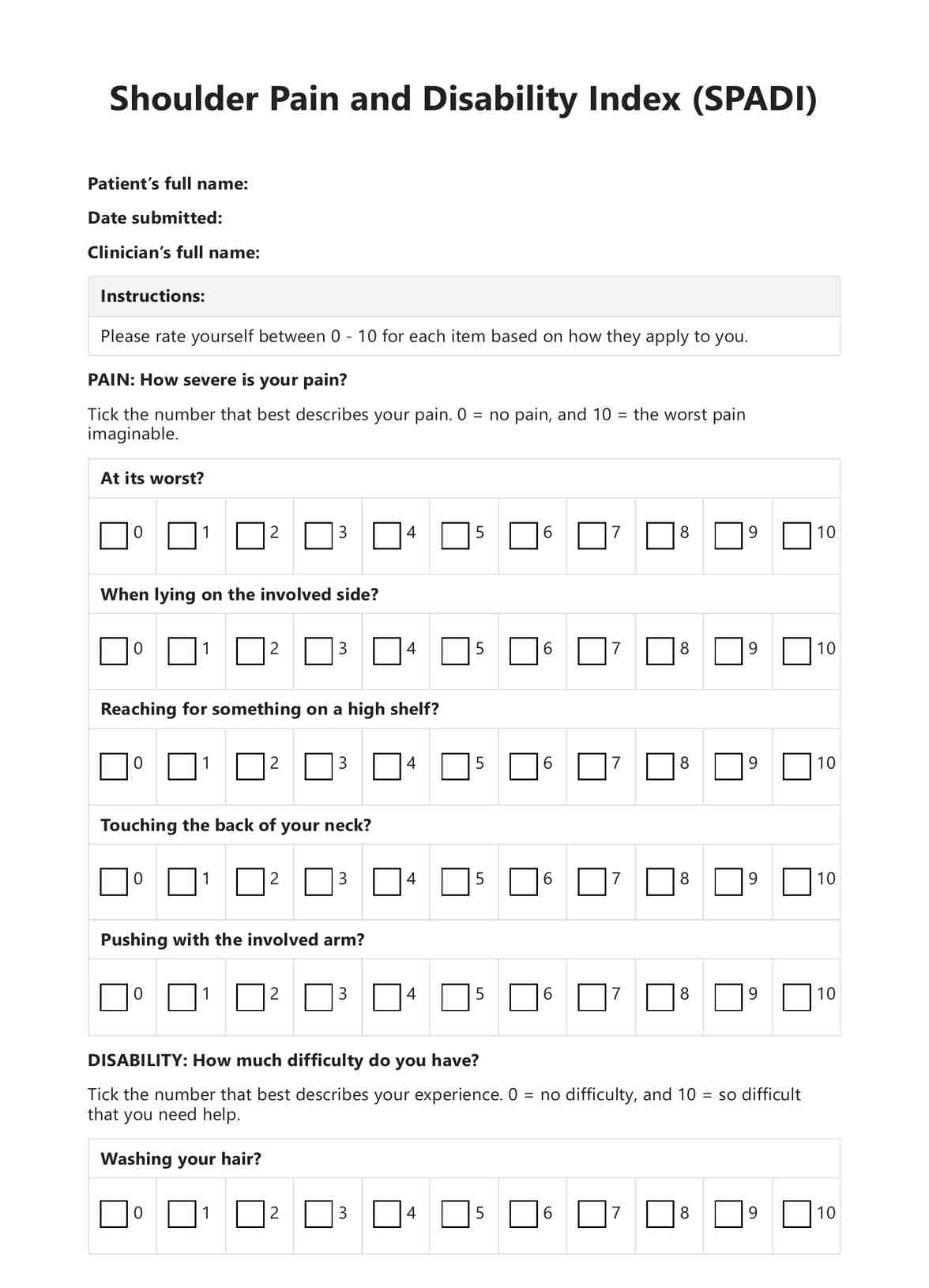Piriformis Syndrome Test
Discover the essential Piriformis Test, a valuable diagnostic tool for healthcare professionals to identify piriformis syndrome and offer effective treatments.


What Is a Piriformis Test?
The Piriformis Test is a specialized clinical examination designed to assess the presence of piriformis syndrome. The piriformis muscle irritates or compresses the sciatic nerve in this neuromuscular condition. This phenomenon results in pain, numbness, and tingling sensations radiating from the buttocks to the lower extremities. Healthcare professionals, particularly physiotherapists and orthopedic specialists, rely on this valuable diagnostic tool to pinpoint the underlying cause of sciatica-like symptoms and tailor effective treatment plans accordingly.
The comprises a variety of maneuvers that elicit pain or discomfort, thereby indicating the involvement of the piriformis muscle. These maneuvers are performed in various positions, such as supine, prone, and seated. The tests include the Straight Leg Raise (SLR) test, FAIR (Flexion, Adduction, and Internal Rotation) test, Pace sign, and Freiberg's, among others. Each test targets specific aspects of the piriformis muscle's function and position, comprehensively assessing the muscle's role in the patient's symptoms.
An accurate and timely diagnosis of piriformis syndrome can significantly impact the patient's quality of life, as it allows for the swift implementation of targeted treatments, such as physical therapy, stretching, and strengthening exercises. Moreover, it helps healthcare professionals differentiate piriformis syndrome from other potential causes of sciatica, like lumbar disc herniation, spinal stenosis, or lumbar radiculopathy.
This guide provides a wealth of resources for healthcare professionals interested in mastering the Piriformis Test, such as a sample template, instructional video, and thorough sections about the benefits and uses of the test. Learning the ins and outs of the Piriformis Test can help medical professionals provide better care for patients.
Piriformis Syndrome Test Template
Piriformis Syndrome Test Example
How Does This Piriformis Test Work?
This Piriformis Test is designed to assess the involvement of the piriformis muscle in producing sciatica-like symptoms. The test comprises various maneuvers that provoke pain or discomfort when the piriformis muscle is involved. Follow these steps to perform the test accurately:
Step 1: Gather Patient Information
Download the PDF file above and gather patient information in the tool.
Step 2: Patient Positioning
Ensure the patient is in a comfortable and relaxed state. Position the patient accordingly (supine, side-lying, or seated) for each test.
Step 3: Perform Straight Leg Raise (SLR)
With the patient in a supine position, raise their leg while keeping the knee extended and ankle dorsiflexed. Observe any pain or discomfort in the buttock, posterior thigh, or leg.
Step 4: Conduct the FAIR Test
Position the patient in a side-lying position. Flex, adduct, and internally rotate the patient's hip with the knee flexed at 90 degrees. Note any reproduction of buttock pain or sciatica-like symptoms.
Step 5: Evaluate Pace Sign
Ask the patient to sit at the examination table. Instruct the patient to abduct their hip against resistance. Assess for pain or discomfort in the buttock or hip.
Step 6: Assess Freiberg's Sign
With the patient in a supine position, passively internally rotate their extended leg at the hip. Monitor for pain or discomfort in the buttock or hip.
Step 7: Perform Beatty's Test
Position the patient in a side-lying position. Ask the patient to lift their leg with the knee flexed at 90 degrees and the hip externally rotated. Look for any pain or discomfort in the buttock or hip.
The Piriformis Test is a comprehensive and systematic approach to assess the involvement of the piriformis muscle in producing sciatica-like symptoms. By following the steps and performing each test accurately, healthcare professionals can effectively diagnose piriformis syndrome and implement targeted treatment strategies for their patients.
Scoring
After completing each test, assign a score of 0 or 1 based on pain or discomfort. A score of 0 indicates a negative sign (no pain or discomfort during the test), while a score of 1 signifies a positive sign (pain or discomfort reproduced during the test). A score of 1 on two or more tests determines a positive finding for piriformis syndrome. This scoring system helps healthcare professionals identify piriformis syndrome and differentiate it from other potential causes of sciatica-like symptoms.
When To Use These Piriformis Assessments
The Piriformis test is helpful for healthcare professionals to evaluate and diagnose potential Piriformis syndrome in patients presenting with hip, low back, and/or leg pain. Here are some critical scenarios when the Piriformis test may be appropriate:
- Patients With Chronic Hip, Low Back, or Leg Pain: Healthcare professionals may use the Piriformis test to help diagnose the cause of chronic pain in these areas, mainly if other potential sources of pain have been ruled out.
- Athletes: As the Piriformis muscle is heavily involved in hip movement and stability, athletes who engage in sports with frequent hip and leg movement, such as runners or dancers, may be more prone to developing Piriformis syndrome. The Piriformis test can be used to help identify any potential issues.
- Patients with Sciatica: The Piriformis muscle runs directly over the sciatic nerve in some individuals, which can cause sciatica-like symptoms. The Piriformis test can help to identify whether the muscle is compressing the nerve.
- Patients With a History of Pelvic or Back Trauma: Patients with a history of pelvic or back trauma may be more susceptible to developing Piriformis syndrome. The Piriformis test can be used to help diagnose this condition.
- Patients With Limited Hip Range of Motion: Limited hip range of motion can contribute to Piriformis syndrome. The Piriformis test can help to identify any potential issues.
- Patients With a Positive Trendelenburg Sign: A positive Trendelenburg sign may indicate hip abductor weakness, which can contribute to Piriformis syndrome. The Piriformis test can be used to help diagnose this condition.
It is important to note that while the Piriformis test can be a valuable tool for healthcare professionals, it should always be used in conjunction with a comprehensive physical examination and patient history. Only then can an accurate diagnosis and appropriate treatment plan be developed.
Who Is This Piriformis Test PDF For?
The Piriformis Test is valuable for healthcare professionals who diagnose and treat musculoskeletal conditions. Below are some examples of practitioners who can benefit from the use of the Piriformis Test PDF:
- Physical Therapists: Physical therapists can use the Piriformis Test to assess their patients' hip and pelvic region mobility, flexibility, and strength. This can help physical therapists develop treatment plans that address their patients' needs and improve their overall health and well-being.
- Orthopedists: Orthopedists can use the Piriformis Test to diagnose Piriformis Syndrome, which can cause pain, numbness, and tingling in the buttocks, hip, and leg. The test can help orthopedists differentiate Piriformis Syndrome from other conditions that cause similar symptoms and develop appropriate treatment plans.
- Sports Medicine Practitioners: Sports medicine practitioners can use the Piriformis Test to evaluate their athletes' flexibility and strength in the hip and pelvic regions. This can help prevent injuries and improve athletic performance.
- Chiropractors: The Piriformis Test can assess patients' hip and pelvic alignment and identify any imbalances causing pain or discomfort. This can help chiropractors develop targeted treatment plans that address their patients' needs.
- Massage Therapists: Massage therapists can use the Piriformis Test to assess their clients' hip and pelvic region flexibility and identify areas that require massage and other forms of soft tissue therapy. This can help improve their clients' overall mobility and reduce pain and discomfort.
The Piriformis Test PDF is valuable for healthcare professionals who diagnose and treat musculoskeletal conditions. Its versatility and ease of use make it popular among many practitioners.
.png)
Benefits of These Free Piriformis Syndrome Test Templates
Streamlined Assessment Process
These templates simplify the assessment process by providing a clear and structured format, allowing healthcare professionals to easily record and evaluate patient information, test results, and scores.
Enhanced Diagnostic Accuracy
Utilizing a standardized template helps ensure consistency in conducting the Piriformis Test, leading to improved diagnostic accuracy and more targeted treatment plans for patients.
Time-Efficient
The organized layout of the templates saves time for healthcare professionals, enabling them to quickly conduct assessments and determine appropriate interventions for patients with piriformis syndrome.
Easy to Use
The straightforward design of these templates makes them accessible to a wide range of healthcare practitioners, facilitating accurate assessments and promoting better patient care.
Cost-Effective Solution
These free templates offer a cost-effective alternative to purchasing expensive diagnostic tools or software, making them an ideal choice for healthcare professionals on a budget.
Shareable and Printable
The templates can be easily shared with colleagues or printed in a clinical setting, ensuring an efficient flow of information and enhanced patient care.
Commonly asked questions
Yes, the Piriformis Test is suitable for patients of all age groups, as long as they can cooperate with the test maneuvers and the practitioner modifies the assessment based on the patient's physical abilities.
While the Piriformis Test is a valuable diagnostic tool, it's essential to use it with a comprehensive clinical assessment, patient history, and, if necessary, additional diagnostic tests to confirm the diagnosis of piriformis syndrome.
The frequency of performing the Piriformis Test depends on the patient's condition, response to treatment, and progress. Regular assessments can monitor the effectiveness of the treatment plan and make adjustments as needed.


